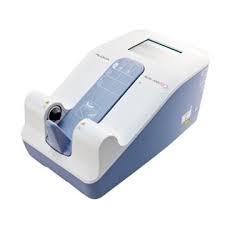Bone Densitometer Market global expansion supported by rising research collaborations and clinical healthcare partnerships

The bone densitometer market is expanding globally, supported by increasing research collaborations and clinical healthcare partnerships. Hospitals, clinics, diagnostic centers, and research institutions are working closely with device manufacturers, academic organizations, and government agencies to advance bone health diagnostics. Collaborative efforts focus on developing innovative densitometry technologies, AI-assisted imaging, portable devices, and integrated digital platforms. These partnerships enhance the accuracy, efficiency, and accessibility of bone mineral density assessments, enabling early detection of osteoporosis and fracture risk evaluation while driving the global growth of the bone densitometer market.
Importance of Research Collaborations
Research collaborations play a vital role in advancing the bone densitometer market. Academic institutions, hospitals, and diagnostic centers partner with manufacturers to develop new technologies, validate clinical applications, and improve diagnostic performance. Clinical studies and trials help refine device accuracy, assess patient outcomes, and support regulatory approvals. Collaborative research also fosters innovation in portable devices, AI-assisted imaging, and digital integration, ensuring densitometry solutions meet evolving healthcare needs. These efforts accelerate market growth by promoting adoption, improving patient care, and supporting preventive healthcare initiatives worldwide.
Clinical Healthcare Partnerships Driving Adoption
Partnerships between healthcare providers and densitometer manufacturers facilitate broader adoption of advanced technologies. Hospitals and clinics benefit from access to training programs, maintenance services, and technological support. Diagnostic centers leverage these collaborations to implement AI-assisted and digitally integrated devices for accurate bone density assessments, patient monitoring, and longitudinal tracking. Partnerships also enable shared resources for community screenings, awareness campaigns, and preventive care initiatives, enhancing patient engagement and promoting early detection of osteoporosis and fracture risks. Such collaborations are key drivers of market growth globally.
Technological Innovations Supporting Market Growth
Technological advancements are central to the expansion of the bone densitometer market. Dual-energy X-ray absorptiometry (DEXA) remains the standard for precise bone mineral density measurements. Portable and handheld devices allow screenings in outpatient clinics, community health centers, and remote areas, improving accessibility. AI-assisted imaging reduces interpretation errors, automates analysis, and provides real-time results. Integration with telemedicine platforms and digital health systems enables longitudinal tracking, predictive analytics, and personalized treatment planning. These innovations enhance diagnostic accuracy, workflow efficiency, and patient experience, supporting global adoption.
Adoption Across Healthcare Facilities
Hospitals, clinics, diagnostic centers, and research facilities are increasingly integrating advanced densitometers. Hospitals utilize devices for geriatric care, preventive screenings, orthopedic services, and multi-specialty integration. Outpatient clinics and community health centers adopt portable densitometers for cost-effective, accessible screenings. Diagnostic laboratories leverage AI-assisted and digitally integrated devices for efficient reporting, longitudinal patient tracking, and clinical research. Broad adoption ensures early detection, personalized interventions, and improved patient outcomes, fueling sustained growth of the global bone densitometer market.
Preventive Healthcare and Patient Outcomes
Preventive healthcare programs are crucial for market growth. Routine bone density screenings, public awareness initiatives, and educational campaigns emphasize the importance of early detection of osteoporosis and fracture prevention. Advanced densitometers allow healthcare providers to identify high-risk patients, monitor treatment progress, and implement targeted interventions. Early diagnosis reduces hospitalization, fracture-related complications, and long-term treatment costs. Integrating preventive care with collaborative research and clinical partnerships enhances patient engagement, proactive bone health management, and widespread adoption across healthcare facilities globally.
Regional Market Insights
Regional trends influence market adoption and expansion. North America leads due to advanced healthcare infrastructure, high research collaboration levels, and preventive care programs. Europe demonstrates steady growth supported by government initiatives, aging populations, and osteoporosis awareness campaigns. Asia-Pacific is expanding rapidly with rising healthcare investments, hospital network expansions, and increasing adoption of AI-assisted and portable densitometers. Latin America and the Middle East are emerging markets gradually integrating advanced devices through collaborative research, preventive programs, and digital health platforms. Understanding regional dynamics helps guide strategic market expansion and investment planning.
Challenges in Market Adoption
Despite strong growth potential, challenges exist in adopting advanced densitometers. High device costs may limit adoption in smaller clinics or underfunded healthcare facilities. Skilled personnel are required for accurate operation and result interpretation. Regulatory differences, reimbursement policies, and infrastructure limitations can affect adoption rates. Limited awareness in some regions about bone health and preventive care may reduce patient participation. Addressing these challenges through cost-effective solutions, professional training, awareness campaigns, and standardized protocols ensures accessibility, adoption, and sustained market growth worldwide.
Future Opportunities
The future of the bone densitometer market is promising, driven by research collaborations, clinical healthcare partnerships, and technological innovation. AI-assisted, portable, and digitally integrated devices enhance diagnostic accuracy, workflow efficiency, and patient monitoring. Telemedicine and digital health platforms enable remote assessments, early detection, and preventive care initiatives. Collaborative programs between manufacturers, healthcare providers, and government agencies can support community screenings, research studies, and awareness campaigns. Emphasis on partnerships, preventive care, and technology integration will sustain market growth and improve global bone health outcomes.
Conclusion
The bone densitometer market is expanding globally, supported by research collaborations and clinical healthcare partnerships. Hospitals, clinics, and diagnostic centers are adopting advanced densitometers for accurate bone mineral density assessments, osteoporosis detection, and fracture risk evaluation. AI-assisted imaging, portable devices, and digital integration enhance diagnostic precision, workflow efficiency, and patient monitoring. Preventive healthcare programs, collaborative research, and awareness campaigns further drive adoption. Despite challenges such as costs, training, and regulatory differences, the market outlook remains positive. Continued focus on partnerships, technological innovation, and preventive care will sustain global market growth and improve bone health outcomes worldwide.
- Vibnix Blog
- Politics
- News
- Liberia News
- Entertainment
- Technology
- التعليم
- Art
- Causes
- Crafts
- Dance
- Drinks
- Film
- Fitness
- Food
- الألعاب
- Gardening
- Health
- الرئيسية
- Literature
- Music
- Networking
- أخرى
- Party
- Religion
- Shopping
- Sports
- Theater
- Wellness


